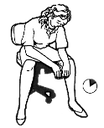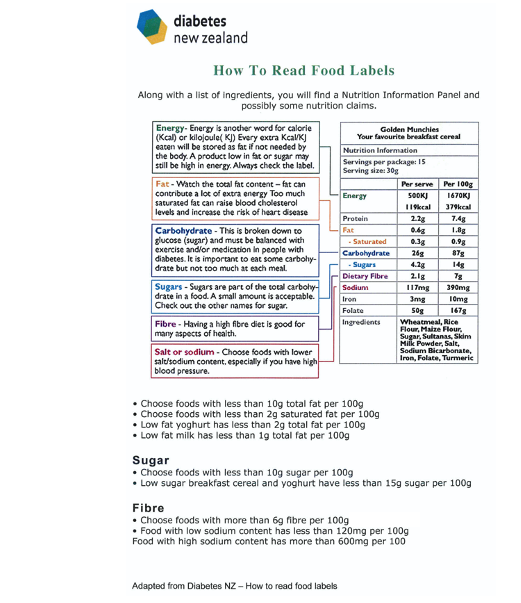|
How to support a child with dyslexia by Ministry Of Education  Dyslexia is a term used to describe a range of persistent difficulties with reading and writing, and often including spelling, numeracy or musical notation. Students with dyslexia do not make expected progress in these areas in spite of good teaching and the type of extra support that would be helpful for most children. But difficulties with dyslexia can be reduced with effective individualised teaching and specialist support. It is important to identify it early Literacy is the foundation of all learning so identifying dyslexia early is critical. That way children can be supported to participate in the full range of social, academic and other learning opportunities at school. Identifying dyslexia before starting school can be difficult and potentially risky as there is so much variation in the way children develop in those early years. Once identified, it is important that ‘dyslexia’ is not used as a label, but rather as a means to action. As a label, it encourages people to see all ‘dyslexic’ students as the same, when we know that they’re not. All students’ individual difficulties and strengths need to be identified and addressed. What are the signs that my child might have dyslexia? Your child may have dyslexia if, after a year at school, they often display a number of these difficulties:
How can I help at home? If your child has dyslexia, you can make a difference. Successful people with dyslexia have said that their success is largely due to the practical and emotional support they received from their parents. Have fun with your child at home or in the car playing word games and making rhymes, reading together and talking about what you’re doing. While language games and reading won’t ‘prevent’ dyslexia, they help by promoting an awareness of the sounds letters make and how language works. Remember to praise and encourage your child, even if they guess wrong.  Infants
Toddlers
Young and school age children
More tips
Mauri Ora – Be Positive People with dyslexia can easily and quickly develop low self-esteem and compensatory strengths, such as memorising text, to try and make up for their difficulties. It is very important for families to support their children’s strengths and successes to boost their self-esteem. How will my school help? If you have concerns about your child’s learning, talk to the teacher. Working with your child’s teacher is crucial if your child has dyslexia. The school will identify your child’s strengths and learning needs so that the most appropriate help can be put in place. It may be necessary to bring in other people to decide if your child needs special support, such as an individual education programme or help from a special teacher, such as a Resource Teacher: Literacy. For more information on how schools can help visit. https://parents.education.govt.nz/primary-school/learning-at-school/how-to-support-a-child-with-dyslexia/ Often children with dyslexia can be helped by Speech Language and Occupational Therapists. If you want additional help just contact Therapy Professionals, our friendly therapists can help. Ph: 03 3775280 Email: [email protected] Sensory Profile Education for Staff Sensory assessments help identify the cause of some unusual behaviours triggered by sensitivities to sight, hearing, taste, touch, smell and movement.
For people with Autism it can help identify:
Sensory Profile Assessments are useful for people of all ages. Our response to information from our senses changes as we grow, develop and age. There are different assessments for each stage of life. This two hour session is an interactive hands on session to help the participants understand their own sensory preferences so they can better support themselves, their team and their clients. If you are interested, please contact: Contact: Therapy Professionals Ltd Phone: 03 377 5280. Fax: 03 377 5281 Email: [email protected] Food Labels Shopping these days can be a ‘headache’ because there are so many different products to choose from, all wanting us to buy them. In order to get our attention, advertisers and promotions trick us into thinking their produce is the healthiest choice. Here are a few tricks they use to encourage us to buy. No added sugar This means sugar has not been added, however, the product is likely to contain fruit sugars or milk sugars and can still be considered high sugar. Check the nutrition information panel for ‘sugar’ content and follow healthy guidelines. Lite or light Could mean less fat, sugar, or salt, or it might just refer to the colour or taste! Check the nutrition information panel and ingredient list to compare with the regular brand.  Low fat or fat reduced By law they must contain less fat than the regular product – however it may still not necessarily be low in fat and are often pumped full of extra sugar and salt to taste better. Use with caution! Cholesterol free or low Cholesterol These products may still be high fat and high energy. Check the nutrition information panel. Many of these products are cholesterol-free naturally, such as nuts, crackers, some chips etc. The type of fat the product contains is more important. We want to avoid saturated and trans fats which contain cholesterol and are found in animal products, processed foods, and oily fish.  Diet’ or low kilojoule or low calorie Generally contains artificial sweetener instead of sugar (40% less energy than regular product) and fat. Toasted or Oven baked Often these products have added fats and oils – it is important to check the fat content on the nutrition information panel. Some can be exactly the same as the fried version i.e. crisps or corn chips. All natural Doesn’t mean much! Sugar, fat, oil, cream and nuts are all natural. Endorsed by the Heart Foundation These products will be low in saturated fat, however, may not be low in total fat, sugar and energy. Companies pay to have this logo on their product. Sometimes the cheaper home brands are jst as good as the expensive endorsed ones. Use with caution.No added salt, low salt, salt reducedIndicates extra salt is not added, however may still contain high levels of natural salts. Check the panel. Diabetic or carbohydrate modifiedSome are high in fact. Usually more expensive. Often best to use the regal products but sparingly How do you read the nutrition information panel If you would like advice our friendly Dietitian can help. Just contact us:
Phone: (03) 377 5280 Email: [email protected] Website: http://www.therapyprofessionals.co.nz A Moving Child is a Learning Child by Gill Connell and Cheryl McCarthy Book Review  Active play is joyful, fun and creative. Play is the essence of childhood. And it is also essential to child development. The benefits of active play are often linked to physical health – which of course, in an era concerned with childhood obesity rates, is critically important. Yet this book tells the lesser- known and surprising story of the myriad ways in which play and movement are vital to our children’s learning. Gill and Cheryl’s ground-breaking book introduces a developmentally complex (yet easy to implement) tool that supports the full, natural development of movement and learning in young children. The Kinetic Scale shows us what constitutes a ‘balanced diet’ of movement, enabling teachers, parents and caregivers to facilitate learning through active play while respecting each child’s individual needs. It’s a story that needs to be heard. At home, at school and in communities, our children are being denied vital opportunities to move their bodies, exercise their imaginations and interact with other kids. Children spend an average of eight hours a day in front of a screen. Almost half of all low-income students do not get any recess. Only one in five children lives within walking distance of a park or playground. This directly affects these children’s physical development and more importantly, their social, emotional and cognitive development. As a society, we are failing to give children the balance of active play they need to become healthy and successful adults. This is why I champion the importance of play because our children’s futures depend on it and it is why Gill and Cheryl are working to stress the message of moving to learn in a way that offers us all new insights and practical, engaging ways to support it That kid’s brains require play should be a no brainer. In this important book, the authors demonstrate what a grave injustice we’re doing to our kids by denying them opportunities to move and play. More than that, through illuminating brain research, they show us why our children need to be on the move, and how we can make this happen for the young children in our care. It is all of our responsibility to give kids the childhood they deserve by ensuring they get the play they need to learn and grow. Reviewer: Darrell Hammond is the founder and CEO of the non-profit a KaBoom which has built more than 2300 playgrounds in areas of need throughout the United States.
If you have a child who is struggling to develop and they need extra help to grow and develop, our friendly therapist can help. Just contact Therapy Professionals on: Phone: 03 377 5280 Email: [email protected] |
AuthorShonagh O'Hagan Archives
July 2024
|


 RSS Feed
RSS Feed